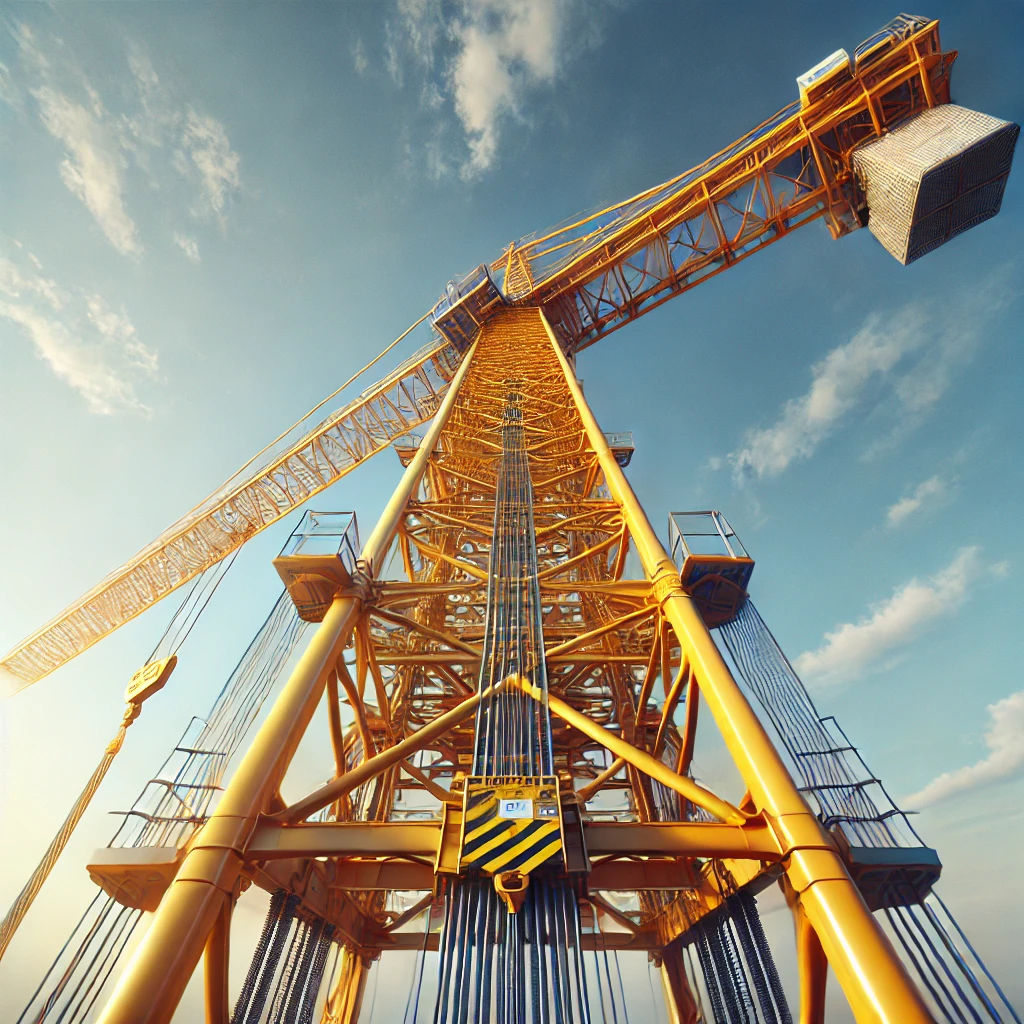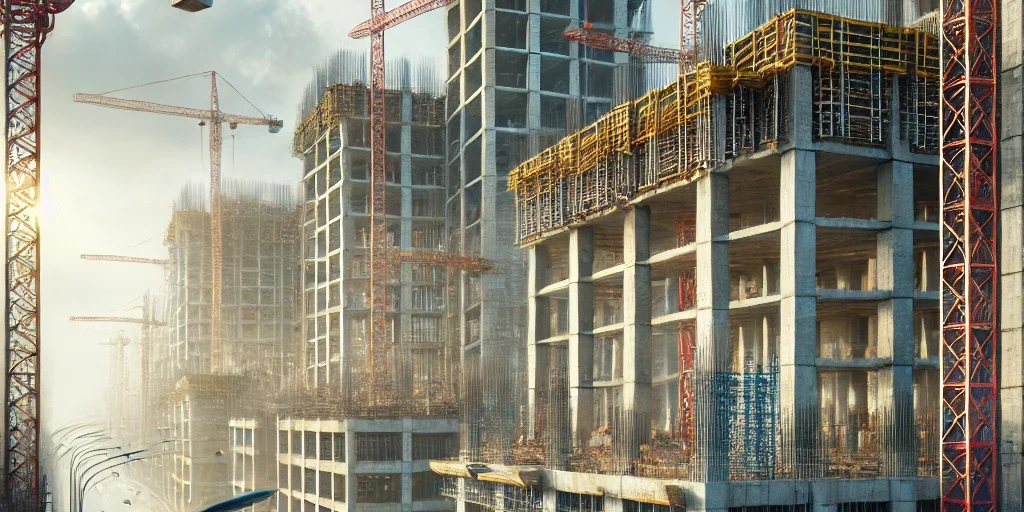Construction cranes are the equipment that characterizes a construction site and towers over new buildings. There are many types of cranes available for rent, but the most well-known is the top-slewing crane. Also known as a construction crane. It can be found on the market with different features, making it not always easy to choose. For this reason, we have prepared a guide for selecting top-slewing cranes.
What is a Top-Slewing Crane?
The top-slewing crane is the most used type in construction and the most common machinery within construction sites. It can lift and move construction materials on site, handling them in situations where there are obstacles on the ground. The crane is therefore the most effective solution for moving heavy and bulky materials at different heights. This capability means that the crane remains on the site almost throughout the whole duration of the work.
The load to be lifted is attached using a hook, forks, an electromagnet, or hook clamps. The top-slewing crane is operated directly from the cabin where the crane operator works. Dimensions of top-slewing cranes can vary significantly between models. The height of the crane can range from 15-20 meters to over 40 meters, while the reach can go up to 80 meters.
How to Choose a Top-Slewing Crane
When choosing a top-slewing crane, several elements must be considered to ensure safe and uninterrupted operation. The first thing to consider is the size of the building to be constructed or renovated and the available space around the property. These indications will allow you to choose between a fixed crane or one that moves on rails, larger or smaller. In any case, it is essential to ensure that the boom can rotate safely to avoid impacts with buildings, both when the crane is in operation and when it is at rest. Regarding booms, it is important to note that manufacturers provide the installation of booms of different lengths on the same crane model, thus offering a wider range of options depending on the site’s needs.

Maximum Capacity
If you need to build very tall buildings, the choice might fall on a top-slewing crane where the cabin is positioned high, i.e., on the rotating part of the crane itself, to have a wide-angle view. For buildings that do not exceed 25 meters in height, smaller cranes with lower rotation are used. Capacity is another important factor to consider. Cranes have a load capacity that can range from 1,000 to 12,000 kg depending on the models but can reach up to 40,000 kg.
The last element to consider is stability, which allows operators to work safely. When working at heights that reach 40 meters, you must deal with wind, and counterweights might not be sufficient.
Required Qualification for Top-Slewing Cranes
As with other machinery, operating top-slewing cranes requires specific qualifications. The regulatory reference in Italy is the State-Regions Agreement of 22/02/2012, which implements Article 73, paragraph 5 of Legislative Decree 81/2008. This agreement establishes the obligation for all users to possess the qualification for operating work equipment.
To obtain the qualification, it is necessary to participate in a training course at an accredited center authorized to issue the qualification. We recommend considering the Niederstätter Academy for various courses and training in the construction sector.
Our Conclusions
When using potentially hazardous machinery, especially when working at heights, it is crucial to pay the utmost attention to safety. Choosing the most suitable top-slewing crane responds to this requirement and to the site’s needs. Maneuvering spaces, height, capacity, and stability are the elements to consider when choosing a top-slewing crane.
Find out on our website which crane you can rent from us.






